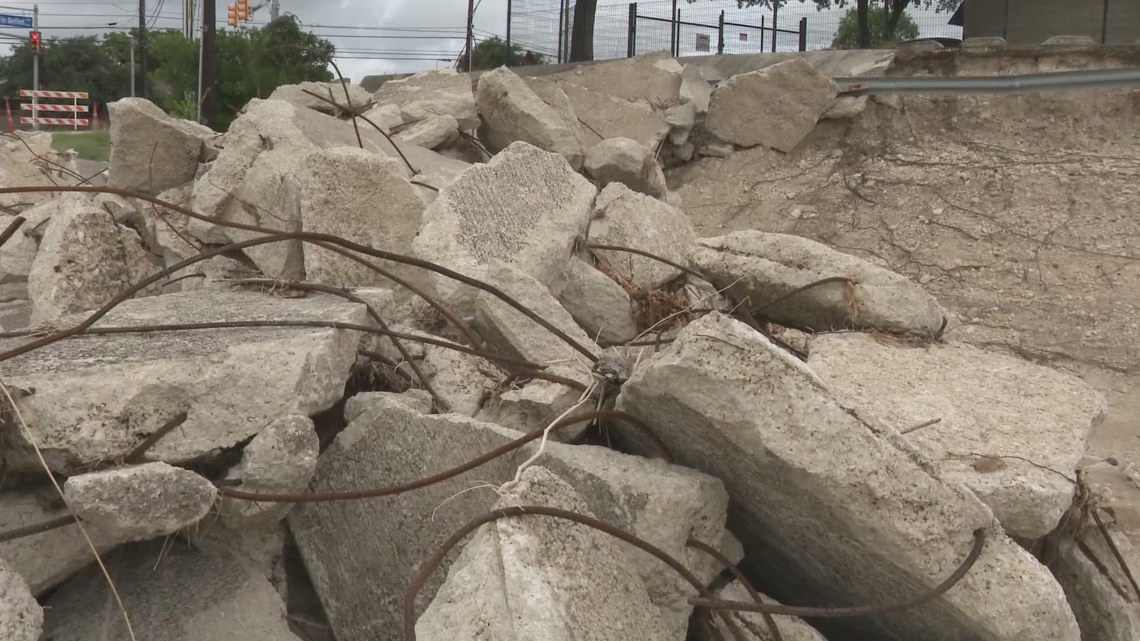
Infrastructure improvements are needed to repair flood damage.
SAN ANTONIO — Surveying flood damage across the northern reaches of his east Bexar County district, Precinct Four County Commissioner Tommy Calvert invested Wednesday morning in learning what he might do to prevent another tragedy.
Dodging holes in pavement that resembled craters, Calvert arrived at Old O’Connor and Weidner Road, which is still blocked by barriers because of extensive damage to the roads in the flood zone.
Looking over the barricades the city has had to fortify many times to keep drivers out of danger, Calvert exclaimed “This is unbelievable! This is a disaster waiting to happen again.”
Looking at the condition of an intersection where a railroad trestle is closed to traffic, Calvert said “It looks like this has been left to rot for a long time. This is an unbelievable state of disrepair.”
Early on, after a flood ravaged the area June 12, Old O’Connor Road was listed as an area that needed extensive work. The road has been closed to traffic since the water receded.
“This just didn’t happen. This has been bad for a long time and you can tell,” Calvert said.
Noting a blocked drainage channel full of brackish water 22 days after the flood, Calvert said “That definitely is not flowing. It probably needs to be excavated.”
Walking past upended utility boxes and a trash dumpster that floated far from where it started, Calvert said “This tells us we have a north east area infrastructure crisis waiting to happen at multiple places. There has got to be a red alert on all of this. This is unbelievable.”
Explaining the city’s method of dealing with development and the resulting storm water runoff, Calvert said maybe it’s time to make adjustments to the Fee In Lieu Of (FILO) process.
“What I’m learning is that a lot of developers can pay their way out of developing detention or retention ponds, which has a regional impact on all the residents, on all the infrastructure downstream,” Calvert said, adding “I think the city is going to have to flag areas where there is a lot of impervious cover and say that’s a zone we can’t give a waiver for any more for retention and detention.”
Calling the risk of future flooding serious, Calvert said too many homes in the area remain vulnerable.
Citing ongoing construction on Loop 410, which features plenty of temporary barricades that might impede the flow of storm water, Calvert said “It remains to be seen how these construction barricades deal with the water flow. Much of it feels haphazard to me.”
Downstream near the confluence of Perrin and Beitel Creeks and an unnamed concrete channel, Calvert saw a huge run of wrought iron fence twisted and felled and said “You can see the water was moving with an amazing force! To knock all the fence line down! And it was anchored in concrete!”
Saying the whole area needs to be evaluated by engineers, Calvert said “Somebody needs to come and study this trajectory here! There was a massive amount of water over here!”
Saying he is committed to making sure changes are made, Calvert said “This one really did break my heart. I literally had to tell people they lost their loved one. It’s been heavy. We cannot forget this incident. I know I’m not and I will not let others forget.”
